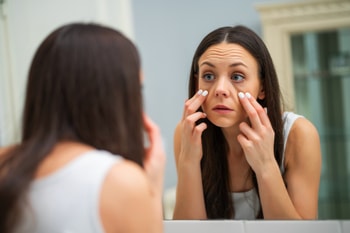Rhinoplasty, often called a “nose job,” is a cosmetic surgery procedure that can reshape the nose for aesthetic or medical reasons, such as correcting a deviated septum or fixing a broken nose. While rhinoplasty is a common procedure with high patient satisfaction rates, many wonder how long it takes to recover from it.
The rhinoplasty recovery process is not immediate. It involves various stages, each requiring careful attention to ensure proper healing. Recovery time depends on several factors, including the complexity of the surgery, whether it’s open or closed, the patient’s general health, and how closely the patient follows the doctor’s instructions.
In this blog, we’ll explore the different phases of rhinoplasty recovery, discuss tips to speed up the healing process and answer common questions such as how long it takes to recover from rhinoplasty and what factors influence this timeline.
Understanding Rhinoplasty Surgery
Rhinoplasty surgery is typically performed under local or general anesthesia, depending on the type and complexity of the procedure. It involves reshaping the bones and cartilage of the nose to achieve the desired look or correct medical issues. The procedure may also address problems such as difficulty breathing caused by a deviated septum or other nasal issues.
There are two main types of rhinoplasty: open rhinoplasty and closed rhinoplasty. Open rhinoplasty involves an incision across the columella (the strip of skin between the nostrils), while closed rhinoplasty involves incisions inside the nostrils, meaning there are no visible external incisions. The type of surgery you undergo will influence your rhinoplasty recovery period.
Rhinoplasty Recovery Time: What to Expect
After rhinoplasty, it’s important to remember that recovery takes time. The healing process can take weeks to months; for some individuals, full recovery can take up to a year. While you might be able to return to work or light activities in a few weeks, the nose continues to heal gradually over several months, and subtle changes will occur during the rhinoplasty recovery period.
First Few Days Post-Op
 Immediately after your nose surgery, you may experience discomfort, swelling, and bruising. The recovery time during this period varies, but most patients can expect moderate swelling and bruising around the nose and eyes. The facial plastic surgeon will provide pain medication to manage any severe pain you experience. A cold compress can also help reduce swelling during the early stages of recovery.
Immediately after your nose surgery, you may experience discomfort, swelling, and bruising. The recovery time during this period varies, but most patients can expect moderate swelling and bruising around the nose and eyes. The facial plastic surgeon will provide pain medication to manage any severe pain you experience. A cold compress can also help reduce swelling during the early stages of recovery.
Week 1: Initial Healing and Post-Op Care
The recovery period following rhinoplasty requires careful attention during the first week. A nasal splint is common to support the newly shaped nose and help reduce swelling. Swelling around the nasal passages and the facial swelling that can occur around the eyes is typical. This is a part of the rhinoplasty recovery process and will subside over time.
You must also keep your head elevated during the first few days to prevent nasal swelling. In the first week, it’s advised to avoid blowing your nose or vigorous exercise to avoid putting too much pressure on the nose and impeding proper healing.
Week 2 to 4: Swelling and Bruising Start to Subside
By the second week after your rhinoplasty surgery, most visible bruising and swelling will begin to subside. Many patients feel much better by this point, but it is essential to continue following your doctor’s instructions. You can likely return to normal daily activities during this stage, though strenuous exercise should still be avoided.
You may still experience some nasal congestion as the swollen nasal tissues and septum heal. Saline nasal spray can be helpful for soothing dry nasal passages during the early stages of healing.
Month 1 to 3: Early Stages of Full Recovery
By the end of the first month, most patients will feel comfortable resuming their normal lifestyle, although they should still avoid activities that could put the nose at risk. During this time, some subtle swelling may persist, particularly in the nasal skin and nose tip. However, the most noticeable facial swelling should be gone.
It’s important to note that this period of recovery is crucial for nasal reshaping. You should continue to avoid sun exposure, which could affect the healing process and increase nasal swelling. This is also when your surgeon may schedule a follow-up appointment to monitor your progress and ensure everything is healing properly.
3 to 6 Months: Healing Continues
After about three months, you will likely notice the shape of your nose beginning to settle into its final form. At this stage, swelling will significantly decrease, and you will have a good sense of the results of your rhinoplasty surgery. However, some minor swelling may remain, especially at the tip of the nose. Most patients can return to their usual activity level, including strenuous exercise, although extreme physical activities should still be cautiously approached.
6 Months to 1 Year: Full Recovery
While you will notice dramatic improvements in your nose’s appearance within the first few months, full recovery from rhinoplasty typically takes up to one year. During this time, any remaining nasal swelling will gradually resolve. Your nose will continue to heal and refine over time. This is why following the rhinoplasty recovery tips provided by your board-certified plastic surgeon is essential.
By the end of the first year, the results of your nose reshaping procedure will be fully visible. Your nose will have completed its transformation, and you should experience improved facial balance and functionality, especially if you had a deviated septum or other breathing issues addressed during the surgery.
Factors That Can Affect Rhinoplasty Recovery
Several factors can impact the rhinoplasty recovery time and overall healing process. Understanding these factors can help you manage your expectations and recovery journey:
Type of Surgery: Open vs. Closed Rhinoplasty
The type of rhinoplasty you undergo can affect your recovery time. Open rhinoplasty involving external incisions may require a longer healing period than closed rhinoplasty, which is done through internal incisions. However, both procedures have relatively similar recovery timelines, with most of the recovery occurring within the first few months.
Complexity of the Surgery
The complexity of your rhinoplasty procedure can also influence recovery. A nose job to address cosmetic issues, such as a bump on the nose or a slightly uneven shape, may have a shorter recovery time than surgeries to correct more significant issues like a deviated septum or extensive nasal reshaping.
Age and General Health
Your age and overall health can also affect your rhinoplasty recovery. Younger patients may heal faster, while older individuals or those with pre-existing medical conditions might experience longer recovery periods. Maintaining a healthy diet during recovery is crucial to support your body’s healing process. Proper healing requires good nutrition, so eat foods rich in vitamins and minerals to promote recovery.
Following Your Surgeon’s Instructions
One of the most important factors in ensuring a smooth rhinoplasty recovery is carefully following your doctor’s instructions. This includes wearing any recommended splints or dressings, managing swelling with cold compresses, and avoiding risky activities like blowing your nose or engaging in strenuous exercise too soon.
Avoiding Complications
In some cases, complications can arise during the healing process, such as infection, excessive swelling, or further injury to the nose. To avoid complications, attend all follow-up appointments and contact your surgeon immediately if you experience unusual symptoms, such as severe pain or difficulty breathing.
Rhinoplasty Recovery Tips: How to Speed Up Healing
Undergoing a rhinoplasty procedure is a transformative experience, whether for cosmetic reasons or to address medical issues such as a deviated septum or nasal surgery. While the results are often highly satisfying, it’s crucial to understand that proper rhinoplasty recovery requires careful management, patience, and attention to detail. Although the healing process takes time, you can use several tips and strategies to speed up healing, minimize complications, and ensure the best outcome from your facial plastic surgery.
Following these rhinoplasty recovery tips can significantly reduce discomfort, minimize swelling, and support your nasal bones in healing properly. Proper aftercare will also help you achieve optimal cosmetic results, ensuring you’re fully satisfied with the final appearance of your nose. Here’s a comprehensive guide to help you recover effectively from your rhinoplasty surgery.
1. Keep Your Head Elevated
 One of the most important tips during the early days of your rhinoplasty recovery is to keep your head elevated as much as possible, particularly while resting or sleeping. This simple yet effective method helps reduce swelling in the nasal passages and the facial swelling that can occur after plastic surgery.
One of the most important tips during the early days of your rhinoplasty recovery is to keep your head elevated as much as possible, particularly while resting or sleeping. This simple yet effective method helps reduce swelling in the nasal passages and the facial swelling that can occur after plastic surgery.
When you lie flat, gravity can cause fluid to accumulate in the nose and surrounding areas, exacerbating nasal swelling and delaying the healing process. For the first few days, aim to sleep with your head elevated by using extra pillows or a wedge pillow to prop yourself up. This will prevent unnecessary pressure on your nasal bones and help reduce inflammation.
It’s also important to avoid bending over or engaging in any activity that could lead to too much pressure on your nose. These practices will help ensure proper healing and minimize the risk of complications.
2. Follow Your Doctor’s Instructions to the Letter
After nasal surgery, your plastic surgeon will provide a list of aftercare instructions tailored specifically to your procedure and recovery needs. Following your doctor’s instructions carefully is essential to ensure the best possible outcome. These instructions will cover various topics, from medication management to restrictions on physical activity, all designed to protect your healing nose.
Some common instructions include avoiding activities like blowing your nose, which could disrupt the healing of your nasal bones and passages, and restrictions on strenuous exercise. Not following these instructions can lead to complications, extended recovery time, and dissatisfaction with your results.
Also, your facial plastic surgeon may suggest specific techniques to reduce swelling, such as cold compresses or specific methods for cleaning and moisturizing the skin around your nose. Adhering to these guidelines will significantly affect your rhinoplasty recovery timeline and improve the overall healing.
3. Use Cold Compresses to Reduce Swelling
A cold compress is one of the most effective and noninvasive methods for managing swollen nasal tissues and reducing facial swelling after rhinoplasty. Swelling is a common part of the recovery process, but using a cold compress during the initial stages can minimize its severity and speed up healing.
Place a cold compress or ice pack wrapped in a soft cloth on your face around the nose and eyes. This can help reduce nasal swelling and relieve any discomfort caused by the procedure. The cooling effect helps constrict blood vessels, slowing down the blood flow and reducing the amount of fluid accumulating in the treated area.
To avoid frostbite, never apply the cold compress directly to the skin. Instead, use a cloth or towel to create a barrier between the ice and your skin. Limit each application to 15-20 minutes, and give your skin time to warm up between sessions.
4. Avoid Strenuous Exercise and Heavy Lifting
During the first few weeks of your rhinoplasty recovery, avoiding strenuous exercise and heavy lifting is essential. Exercise can increase blood flow, which may exacerbate nasal swelling and interfere with your healing process. Additionally, vigorous activities like running or weightlifting may strain your body and nasal bones excessively, potentially hindering your recovery.
In the first two weeks, it’s best to refrain from any activities that increase your heart rate significantly or cause you to strain, as this can increase blood pressure and affect the healing of the delicate nasal tissues. After the initial recovery period, you can gradually return to your normal exercise routine, but it’s best to ease into it gradually. Always get the go-ahead from your facial plastic surgeon before resuming strenuous activities.
5. Stay Hydrated and Maintain a Healthy Diet
Proper nutrition is an often overlooked aspect of rhinoplasty recovery. Your body needs the right fuel to heal quickly and effectively. Eating a balanced, healthy diet rich in vitamins, minerals, and protein will support the healing of your nasal skin, nasal bones, and the tissues inside your nose.
Consider focusing on foods high in vitamin C, which is essential for collagen production and tissue repair. Leafy greens, citrus fruits, and bell peppers are excellent sources of vitamin C. Also, ensure you get enough protein from lean meats, beans, or plant-based sources, as protein plays a crucial role in tissue regeneration.
Staying hydrated is equally important. Drinking plenty of water helps maintain your body’s natural healing processes, reduces the risk of complications, and keeps your skin moisturized.
6. Avoid Sun Exposure
After rhinoplasty, your nasal skin will be more sensitive than usual, and direct exposure to the sun can hinder your rhinoplasty recovery. Sun exposure can cause inflammation and pigmentation changes in the skin, leading to longer healing times and possibly affecting the final cosmetic outcome.
For at least six months after surgery, it is important to avoid direct sunlight on your nose as much as possible. When you go outside, wear a broad-spectrum sunscreen with SPF 30 or higher to protect your skin from harmful UV rays. Consider wearing a wide-brimmed hat to provide additional protection for your face.
7. Avoid Smoking and Alcohol
Smoking and drinking alcohol can significantly delay your rhinoplasty recovery process. Smoking restricts blood flow and decreases oxygen levels, critical for healing. Nicotine can impair your body’s ability to heal properly, so it’s highly recommended that you stop smoking well before your nasal surgery and refrain from smoking during the entire recovery period.
Similarly, alcohol can increase swelling and affect the body’s natural healing process. It also can interfere with the effectiveness of certain medications, including pain relievers and antibiotics. To ensure the fastest and safest recovery, it’s best to avoid alcohol for several weeks following surgery.
8. Use Saline Nasal Spray to Keep Nasal Passages Moist
 After your rhinoplasty surgery, your nasal passages may feel dry or congested as they heal. A saline nasal spray can help keep your nasal passages moisturized, reduce congestion, and support proper healing by preventing the buildup of crusts or scabs inside your nose.
After your rhinoplasty surgery, your nasal passages may feel dry or congested as they heal. A saline nasal spray can help keep your nasal passages moisturized, reduce congestion, and support proper healing by preventing the buildup of crusts or scabs inside your nose.
Consult your surgeon about which saline nasal spray is best for your recovery. Regular use will help keep the inside of your nose comfortable and promote healing without irritation.
9. Sleep in a Comfortable Position
As mentioned, sleeping with your head elevated is crucial to reducing swelling and promoting proper healing. However, it’s also important to ensure you’re sleeping in a position that doesn’t put too much pressure on your nose.
Avoid sleeping on your side or stomach, as this can create pressure on the nose and affect the final shape. The best position is on your back with your head elevated. Some patients find it helpful to use a travel pillow around their neck for extra support and to prevent rolling over onto their side during sleep.
10. Monitor Your Healing and Keep Follow-Up Appointments
As you progress through your rhinoplasty recovery, monitoring the healing of your nasal bones and soft tissues is essential. Monitor for any signs of complications, such as excessive swelling, unusual pain, or difficulty breathing. If you notice any of these symptoms, contact your plastic surgeon immediately.
It’s also vital to attend all your follow-up appointments with your surgeon. These visits allow your surgeon to monitor your recovery and make necessary adjustments to ensure the best possible result. During these appointments, your surgeon can assess the healing of your nasal bones, check for infection, and confirm that your facial plastic surgery is progressing as expected.
Conclusion
In summary, the question of how long does it take to recover from rhinoplasty can vary from person to person. However, the rhinoplasty recovery time generally takes several months, with the full results becoming apparent within one year. During this time, following your plastic surgeon’s advice, maintaining a healthy diet, and being mindful of your recovery can significantly contribute to healing and help you achieve the best possible results.
By understanding the typical stages of rhinoplasty recovery and following the necessary precautions, you can ensure a smooth transition back to your normal life while enjoying the benefits of your newly shaped nose.
References
https://my.clevelandclinic.org/health/treatments/11011-rhinoplasty#:~:text=It%20can%20take%20up%20to,swelling%20could%20still%20be%20present.
https://www.plasticsurgery.org/news/articles/what-to-expect-from-your-rhinoplasty-recovery
https://www.mayoclinic.org/tests-procedures/rhinoplasty/about/pac-20384532




